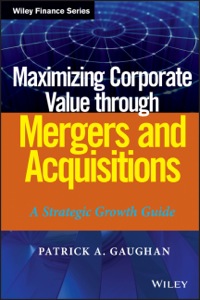COMPREHENSION QUESTIONS 1. Complete the following costing sheet using the information already included in the form. Spice Factor: 3.0% Q Factor: $1.88 Selling Price: Converted AP EP Cost Extended Cost Cost FC%: X AP Cost $1.47/8 Recipe: Grilled Chicken with Mango Salsa No. of portions: 30 Cost per portion Ingredient Recipe (EP) Yield % Quantity Chicken breast 180 OZ 95% skinless, boneless, trimmed, 6 oz each Mango, fresh, 28 61% diced Red onion, diced C Cilantro, fresh 4 Tbsp 100% chopped Lime juice, fresh 2 oz 100% $10/8# 77% $0.22/ $0.79/bun (1 bun 5 Tbsp chopped) $0.39 per lime (1 lime 1 oz juice) $12.20 for 36/38 $6.48/# SF SF X X X Salt 1 Tbsp 100% Black pepper, }tsp 100% ground Total X Total with Spice Factor Adjustment Cost per Portion True Cost per Portion (Q factor adjusted) 2. A chef tracks all of his spice factor items over a year and notices that their total value is $2,025. The total value of his food purchases was $80,750 over the same time period. What is the spice factor fi this operation? RECIPE COSTING | CHAPTER FIVE 69 3. A restaurant offers each guest a cup of the soup du jour (which rotates daily), a house salad with their choice of dressing (vinaigrette, French, ranch, or blue cheese), choice of rice or baked potato, mixed vegetables, and bread sticks with the purchase of each entre. Using the information that follows. what should the restaurant's Q factor be? Costs per portions: Beef barley soup-$0.28 Chicken noodle soup-$0.21 Manhattan clam chowder--$0.35 Cream of potato soup-$0.26 Plain house salad-$0.62 Vinaigrette dressing.S0.07 French dressing-$0.08 Ranch dressing -$0.09 Blue cheese dressing - $0.29 Rice $0.10 Baked potato-$0.19 Mixed vegetables - $0.18 Bread sticks $0.11 4. What is the likely impact to a restaurant that does not utilize standard recipes? 5. List five different tools that could be used for a por- tion measure. DISCUSSION QUESTIONS to control analiry 5. For most ingredients, a recipe costing sheet could COMPREHENSION QUESTIONS 1. Complete the following costing sheet using the information already included in the form. Spice Factor: 3.0% Q Factor: $1.88 Selling Price: Converted AP EP Cost Extended Cost Cost FC%: X AP Cost $1.47/8 Recipe: Grilled Chicken with Mango Salsa No. of portions: 30 Cost per portion Ingredient Recipe (EP) Yield % Quantity Chicken breast 180 OZ 95% skinless, boneless, trimmed, 6 oz each Mango, fresh, 28 61% diced Red onion, diced C Cilantro, fresh 4 Tbsp 100% chopped Lime juice, fresh 2 oz 100% $10/8# 77% $0.22/ $0.79/bun (1 bun 5 Tbsp chopped) $0.39 per lime (1 lime 1 oz juice) $12.20 for 36/38 $6.48/# SF SF X X X Salt 1 Tbsp 100% Black pepper, }tsp 100% ground Total X Total with Spice Factor Adjustment Cost per Portion True Cost per Portion (Q factor adjusted) 2. A chef tracks all of his spice factor items over a year and notices that their total value is $2,025. The total value of his food purchases was $80,750 over the same time period. What is the spice factor fi this operation? RECIPE COSTING | CHAPTER FIVE 69 3. A restaurant offers each guest a cup of the soup du jour (which rotates daily), a house salad with their choice of dressing (vinaigrette, French, ranch, or blue cheese), choice of rice or baked potato, mixed vegetables, and bread sticks with the purchase of each entre. Using the information that follows. what should the restaurant's Q factor be? Costs per portions: Beef barley soup-$0.28 Chicken noodle soup-$0.21 Manhattan clam chowder--$0.35 Cream of potato soup-$0.26 Plain house salad-$0.62 Vinaigrette dressing.S0.07 French dressing-$0.08 Ranch dressing -$0.09 Blue cheese dressing - $0.29 Rice $0.10 Baked potato-$0.19 Mixed vegetables - $0.18 Bread sticks $0.11 4. What is the likely impact to a restaurant that does not utilize standard recipes? 5. List five different tools that could be used for a por- tion measure. DISCUSSION QUESTIONS to control analiry 5. For most ingredients, a recipe costing sheet could








